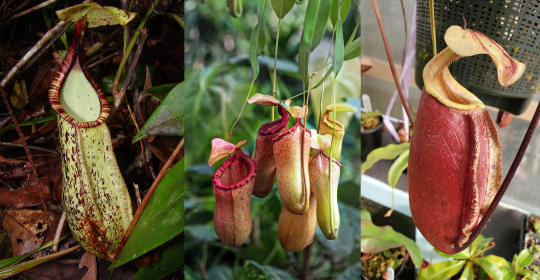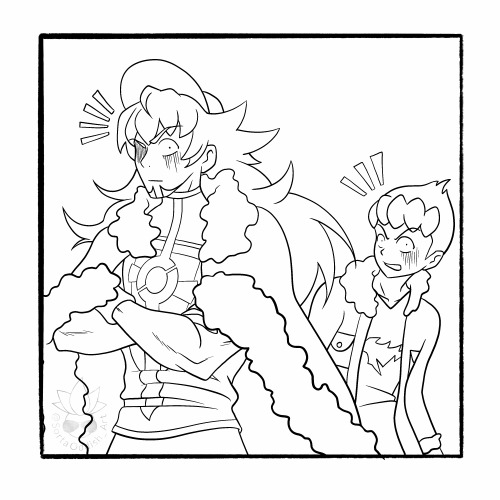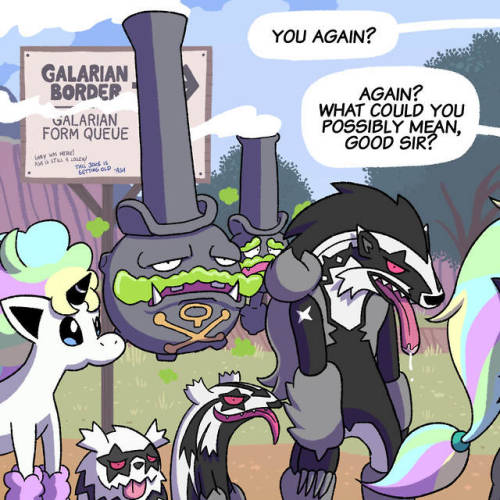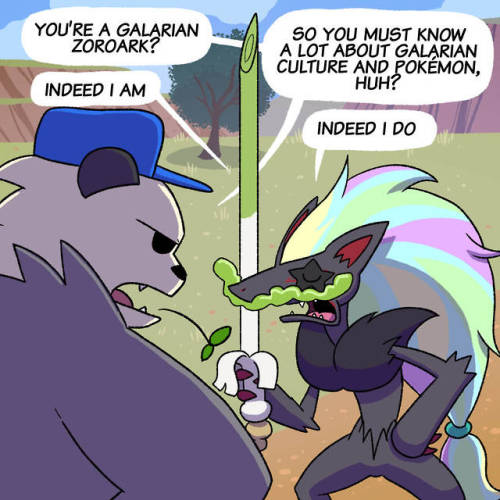#pokemon sword
Brilliant Diamond & Pokémon Shining Pearl trailer
The latest news for New Pokémon Snap has been released. We’re currently compiling all details so keep checking back. It is due for release on April 30th, further details forthcoming:
This game has you explore the Lental Region and take photographs of over 200 Pokémon. Your task is to investigate the Illumina phenomenonforProfessor Mirror on NEO One. There is a Pokédex to complete and Professor Mirror will evaluate your photographs based on the similar features as the original game: Pose, Size, Direction, Placement, Background, Other Pokémon and so forth. You can then register your photos into your Pokédex for that Pokémon.
EDIT: More Details
- You can call Pokémon’s attention using fluff fruit, they will eat it, or interact with it.
- The game will require 6.8GB of space to download and is confirmed to be 1 Player. It supports Cloud Save backups and Touch Screen
Post link

HAPPY NEW YEAR!!! Take this belated holiday art of brothers being wholesome before the year ends
Ahhh, autumn The beautiful season of pumpkin carving, leaf watching and ditching your directionally-challenged friends in corn mazes.
Post link
Ok SWSH fans. Here’s what REALLY went down when Leon battled Eternatus.
(Language warning… sorta)
Post link






Made for a friend.






My Wooloo is finished and floofed.
Raihan selfie to start off 2020

Requested anonymously
During Cinderace’s signature move, Pyro Ball, this soccer-playing rabbit picks up a pebble and turns it into a ball of flame, kicking it into its rivals for devastating damage.

Rocks may not seem flammable intuitively, but in reality, some of the biggest naturally occurring fireballs in our world have the same humble origin, as a small rock being blasted through the atmosphere. I’m talking about meteors.
Meteors, also known as shooting stars, are rocks from space that burn up as they pass through the Earth’s atmosphere. The rocks themselves are usually fragments that broke off of a comet or asteroid, with sizes ranging from the size of a grain of sand up to the size of a boulder, several meters in diameter. Very bright meteors are called fireballs, for somewhat obvious reasons. Here’s what they look like:

The top two images there are real meteors observed on Earth (the bottom two are artists depictions), large space rocks that crashed through the atmosphere. The reason that meteors become fireballs and burn up in the atmosphere is because of ram pressure. The rock pushes on and compresses all of the air in front of it, building up high pressure and creating a shockwave. Meteors often reach temperatures of over 3000 degrees Fahrennheit this way, which makes the rock glow brightly and actually ignites the air it travels through, creating the signature long streaks of fire through the sky.
Fireball meteors usually don’t survive longer than a few seconds - the rock literally vaporizes, burning up and breaking apart miles before it hits the ground. These rocks are fast,clocking in around a speed of 20 kilometers per second (or 45,000 mph). So that should give you an idea on how hard Cinderace can kick.
Cinderace picks up a pebble and kicks it at speeds greater than 20 kilometers per second, igniting the pebble and turning it into a firey meteor.
Post link
Requested by @mindsnot
Appletun may look sweet, but according to it’s pokédex entry, it’s actually a ruthless predator. Appletun secretes a sweet-smelling nectar through its skin, attracting bug Pokémon for Appletun to then snack on. That’s a pretty brutal, yet effective, strategy for finding lunch. Just ask the pitcher plant:

Pitcher plants are a family of carnivorous plants - similar to the Venus Fly Trap - that get their nutrients from eating insects rather than absorbing them from the soil. They typically live in areas where the soil is thin or acidic, and due to the poor soil conditions they can’t get the nutrients they need from their roots like other plants. Instead, they adapted another method of getting what they need: consuming insects!
Pitcher plants in particular are characterized by their cup-shaped leaves, which are filled with a puddle of flower-scented nectar at the bottom. Unsuspecting bugs follow the sweet scent looking for a snack of their own, but end up becoming the snack. Once the insect falls into the cup, the waxy, smooth walls of the leaves make it so the bug can’t climb out again, and it ends up drowning in the pool of nectar. The nectar pool also contains digestive enzymes which helps break down the nutrients for the pitcher plant to absorb, kind of like the acid in your stomach. Appletun’s signature move, Apple Acid, makes a lot of sense in this context: its nectar attracts bug pokémon by the sweet scent, but the nectar is actually acidic, which helps it digest the bug pokémon to eat.
Appletun is part Grass-type, so the pitcher plant is a fair comparison, but it doesn’t explain the fact that Appletun looks more like a dragon than a plant, and the pokédex tells us that its nectar comes from everywhere on its skin, not only in its leaves.
To explain this we can look towards amphibians, like frogs and salamanders, who are known for having slimy skin!

Amphibian skin needs to be wet to properly function: they “drink” through their skin to stay hydrated, and they absorb oxygen through their skin to breathe. It also helps them regulate their body temperature. The “slime” on an amphibians skin is actually a mucous, secreted by many glands throughout their skin, keeping them hydrated. Some salamanders also have beneficial microbes in their slimy coating to boost their immune system. Tree me frogs commonly use their mucous to help stick to leaves and rocks, enabling them to climb, and others have even adapted to secrete poison in it to deter predators.
Appletun’s skin must contain many mucous glands like an amphibian, which constantly secretes the sweet-smelling liquid all over its body. I like to think it has a similar texture, scent, and appearance to apple pie filling. The slime probably has multiple purposes, like a frogs, to help Appletun stay hydrated and regulate its body temperature. But most importantly, the sweet scent attracts bug pokémon, which Appletun can then turn into a tasty snack.
Appletun’s skin contains glands that secret a mucous that smells like sweet plant nectar. This slimy coating helps Appletun stay hydrated, boosts its immune system, and lures in prey for Appletun to eat.
Post link
Requested Anonymously
If you’ve ever dabbled in gardening, you have probably heard that playing music for plants helps them grow. Rillaboom takes that to the extreme, beating its drum to summon roots, vines, and leaves to take down its enemies. It’s signature move, aptly named Drum Beating, is a prime example of this.

While we can’t reproduce anything that extreme in our world, there is some truth to it. Music really does help plants grow - so let’s talk about that!
Scientifically speaking, music is just a collection of pressure waves, vibrations that travel through the air. The source of the sound - whether that’s your vocal chords, a guitar string, or Rillaboom’s drums - wiggles back and forth, pushing the air around it. It starts a bit of a chain reaction, where the molecules in the air push on the molecules next to them, and send the wave all the way down the line, until ultimately, the air pushes on your ear drum.

If you have ever been to a loud concert, or watched a plane take off, or heard any big sound, chances are you probably felt the sound just as much as you heard it. That is the vibrations in the air - the molecules traveling down the line until they push on you.
It is these vibrations that help plants grow, not the music itself. Scientists think that the movement helps stimulate activity in the plant - it speeds up the flow of nutrients, water, amino acids, and all of the things plants need to grow. Think of it like an almost-empty bottle of ketchup. What do you do to get that last bit out? You shake it! In plants, the shaking caused by sound waves helps nutrients move through the plant faster, resulting in more overall growth. In some experiments, music-listening plants produced 30% more flowers and fruit than their counterparts stuck in silence (source).
When Rillaboom plays its drum, each beat is causing vibrations in the plant. These vibrations propogate through to the roots of its stump, stimulating the roots to grow very quickly, erupting out of the ground and whacking any poor pokemon nearby.
Rillaboom bangs on its drums to produce vibrations in the tree stump. The vibrations stimulate cellular activity in the plant, speeding up the flow of nutrients, causing the roots to grow very quickly.
Post link






















